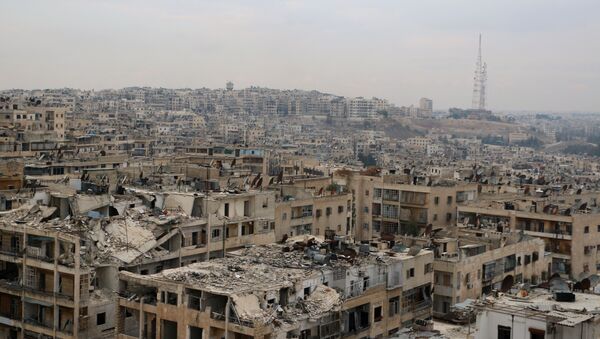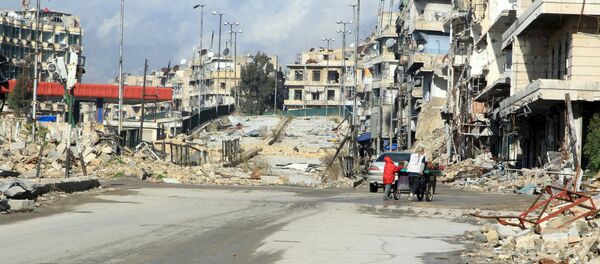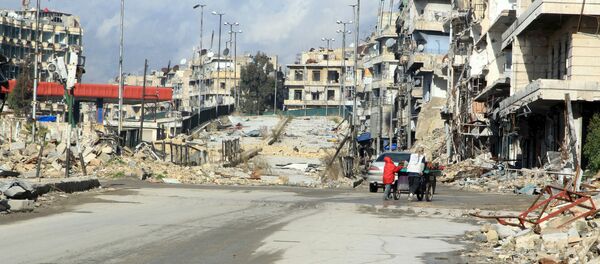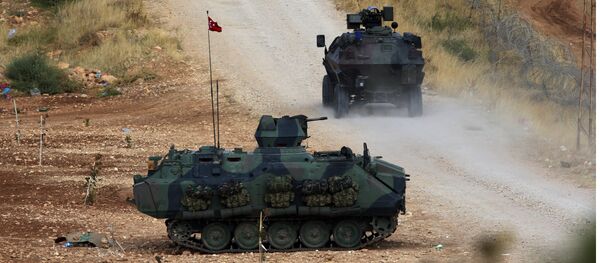When Syria was established as an independent state, Aleppo was the country’s largest city and business center. As of 2011, its population was three million. Most of Syria's industrial facilities were concentrated in the city of Aleppo and its immediate suburbs, and employed 50 percent of country’s labor force.
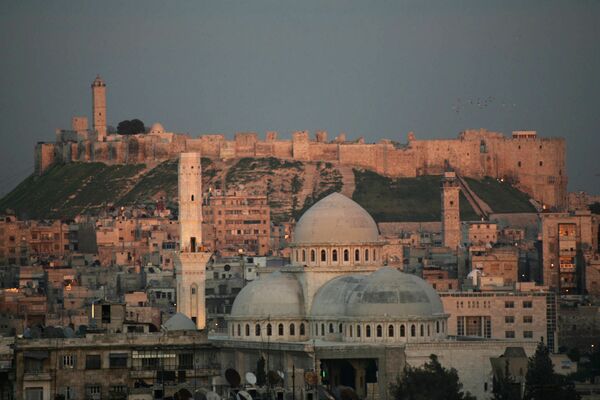
The nationwide protests which sparked in Syria in 2011 did not spare Aleppo. Protests and meetings in Aleppo started in August 2011, and were held under the flags of both opposition forces and supporters of President Bashar Assad.
However, the level of violence gradually increased. A series of terrorist attacks rocked the city, and the authorities launched an anti-terrorist campaign which was portrayed as "oppressive" by some Western media sources.

Combat activity started in Aleppo in July 2012, when militants launched an offensive on the city. After fierce street battles, in spring 2013 the Syrian Army and militants carved out their own respective regions of the city.
For more than a year, both sides mainly tried to maintain their positions, without engaging in large-scale clashes. At the same time, the industrial areas of Aleppo became a battlefield. By February 2015, the Syrian Army had managed to partly surround the city.
Since the beginning of the civil war, Aleppo has been home to a large number of foreigners, due to its proximity to Turkey. Daesh field commanders such as Abu Omar al-Shishani and Muslim Abu Walid Shishani are known for having taken part in the fighting in Aleppo.
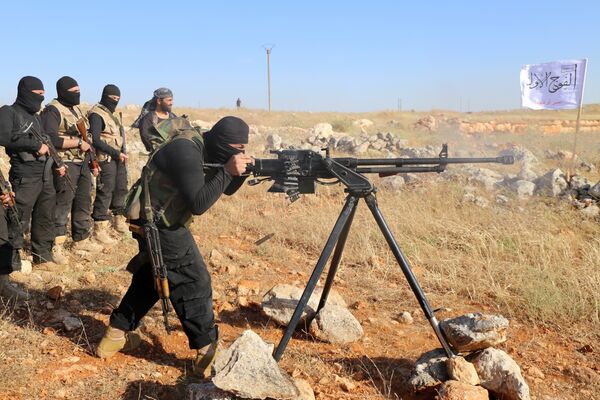
In addition to Daesh (ISIL/ISIS), the al-Nusra Front has been actively engaged in battles in Aleppo and its suburbs. Like Daesh, this terrorist group has recruited Islamic fundamentalist militants from all over the world. Its goal is to establish a Sharia-ruled state in the areas it controls, spreading terror among the 300,000 people who remain in Aleppo.
Other extremist groups active in Aleppo and its suburbs include the Islamic Front, Jabhat Ansar al-Din, and the Caucasus Emirate in the Levant. They cooperate with the so-called Free Syrian Army.
While the Western media repeatedly airs footage of buildings lying in ruins, few acknowledge that the Battle of Aleppo has already lasted four grueling years. During combat, the electrical grid, water supply and sewage system were damaged. Power supplies were partly restored in the city in 2013, and the local power plant is now operated by a managing council formed by locals. However, the situation with the water supply still remains disastrous.
At the same time, food supplies to Aleppo have been more or less regular, but expensive due to a great number of risks.
All of the above proves that the humanitarian situation in Aleppo can be described as permanently catastrophic.
Recently, the Western media has reported that Russian airstrikes and Iranian forces have forced people to flee Aleppo. However, areas which remain under Syrian government control have already seen a massive number of internal asylum seekers arrive, fleeing the militants’ numerous atrocities. According to the UN, as of December 2015, 6.5 million refugees were internally displaced.
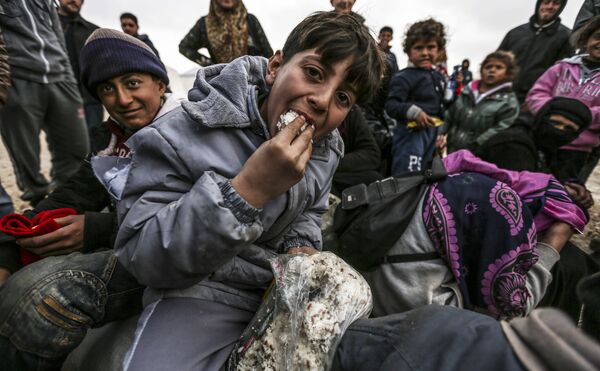
Currently, the developments around Aleppo are being heralded as a "turning point" in the Syrian civil war.
The first reports that Aleppo was going to be liberated appeared in autumn 2013. However, it was not that simple. Syrian forces have been gradually liberating Aleppo's suburbs. It seems that the strategy is to surround and blockade the city. Despite their efforts, much of Aleppo remains controlled by militants, and government forces have yet to completely encircle the eastern part of the city.
Furthermore, even is the Syrian Army manages to surround Aleppo, it may take months for them to regain control over the city. The army cannot assault Aleppo as it would cause numerous casualties among its residents.
The West and Turkey consider Aleppo a strong card for Syrian rebel groups to play during negotiations. Even though it is partly in ruins, control of such a large city could significantly boost their status in the Syrian peace talks.

